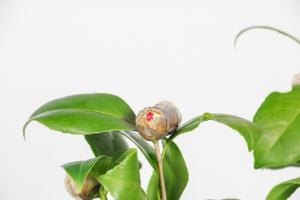Introduction
Saltwater runoff is an environmental concern affecting many areas. This kind of pollution is caused by the excess saltwater that flows from the roads and highways into the river, streams, and oceans. This saltwater runoff has adverse effects on human health and many other environmental aspects such as plants and wildlife. In this article, we will discuss the plants that can take up saltwater runoff, and how they help mitigate the impact of this environmental pollution.
Plants that can take up saltwater runoff
There are many plants and vegetation that can tolerate saltwater runoff. These plants have evolved to live in saline soil and saline water conditions. For example, coastal grasses like Spartina, known as cordgrasses, and saltgrass are excellent at absorbing saltwater. Many mangroves and saltmarsh plants are also adapted to saline soil and can absorb saltwater runoff.
How do plants take up saltwater from runoff?
Plants that can tolerate saltwater have a unique mechanism to absorb salt and remove it from their tissues. These plants have evolved several adaptations to take up salt ions selectively, allowing them to maintain a low salt concentration in their tissues. For instance, salt marsh plants have structures called 'salt glands,' tiny passages on the surface of leaves, which excrete salt onto the surface of the leaves. This process helps saltmarsh plants to maintain low salt concentrations in their tissues.
Benefits of using saltwater tolerant plants
Planting saltwater tolerant vegetation can help mitigate the impact of saltwater runoff pollution. Saltwater tolerant plants absorb excess salt ions from the runoff and prevent them from reaching the water bodies, thereby reducing the salinity of the soil and water body. Moreover, the vegetation serves as a filter that traps the sediment from the runoff before it enters the water body. Planting these plants in areas vulnerable to saltwater runoff helps in maintaining the natural balance of the ecosystem.
Conclusion
In conclusion, saltwater runoff is an environmental problem that affects multiple areas. Fortunately, there are various saltwater tolerant vegetation that we can use to mitigate the impact of this pollution. These vegetation can absorb salt ions and help in maintaining the natural balance of the ecosystem. Therefore, it is essential to recognize the importance of saltwater tolerant vegetation and encourage their use in vulnerable areas.

 how many times do yo...
how many times do yo... how many planted tre...
how many planted tre... how many pine trees ...
how many pine trees ... how many pecan trees...
how many pecan trees... how many plants comp...
how many plants comp... how many plants can ...
how many plants can ... how many plants and ...
how many plants and ... how many pepper plan...
how many pepper plan...

































